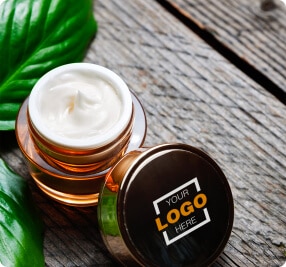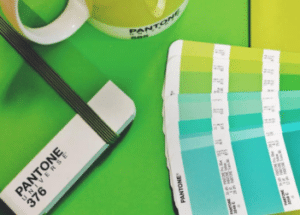In today’s environmentally conscious world, businesses and individuals alike are seeking sustainable solutions for their printing needs. Thankfully, technology like UV printing provides a powerful answer, offering stunning results while minimising environmental impact. But before we delve into its eco-friendly benefits, let’s quickly understand what UV printing actually is:
What is UV Printing?
Unlike traditional printing methods that use liquid ink that dries through evaporation, UV printing utilizes a special type of ink that remains liquid until exposed to ultraviolet (UV) light. During the printing process, the ink is deposited onto the chosen substrate, and then instantly cured and solidified by strategically positioned UV lamps. This innovative technology unlocks several advantages, with sustainability being one of the most significant.
Now, let’s explore the key environmental benefits of UV printing

1. Fewer VOCs, Cleaner Air
Traditional printing often relies on solvent-based inks, releasing harmful volatile organic compounds (VOCs) into the air. These VOCs can contribute to respiratory problems and air pollution. UV printing, however, uses inks that cure instantly under UV light, drastically reducing VOC emissions and contributing to cleaner air for everyone.
2. Energy Efficiency at its Finest
The curing process in UV printing utilizes LED lamps, which are significantly more energy-efficient than traditional drying methods that rely on heat. This translates to lower energy consumption, minimized carbon footprint, and a responsible approach to resource management.
3. Waste Not, Want Not
Unlike solvent-based inks, UV inks don’t evaporate during the printing process. This not only minimizes air pollution but also reduces ink waste, leading to more efficient material usage and less discarded ink cartridges.
4. Durability that Saves Resources
UV-printed materials boast exceptional durability, resisting fading, chipping, and scratching far better than traditionally printed items. This translates to longer-lasting products, fewer reprints, and less waste generated over time, saving resources and reducing the need for frequent replacements.
5. Versatility for Sustainable Alternatives
UV printing allows for printing on a wider range of materials, including eco-friendly options like recycled paper, bamboo, and even biodegradable substrates. This opens doors for innovative and sustainable packaging solutions, reducing reliance on harmful plastics and encouraging responsible product design.
6. Responsible Partnerships
Many UV printing companies, including ours, prioritize green practices throughout their operations. We source inks and materials from eco-conscious suppliers, implement responsible waste management strategies, and continually strive to minimize our environmental impact.
Life-cycle Analysis

While claiming “environmentally friendly” is common, understanding the real impact is crucial. Let’s delve deeper through a lifecycle analysis (LCA) comparing UV printing to traditional methods, exposing their environmental footprints at each stage:
1. Raw Material Extraction:
- UV Printing: Inks often use bio-based resins, reducing reliance on petrochemicals. Substrates like recycled paper further minimize impact.
- Traditional Printing: Solvent-based inks rely heavily on fossil fuels, and virgin paper production incurs deforestation and resource depletion.
2. Production & Energy Consumption:
- UV Printing: LED curing consumes significantly less energy than traditional heat-based drying methods.
- Traditional Printing: Drying systems in offset printing demand high energy, and solvent evaporation contributes to air pollution.
3. Waste Generation & Disposal:
- UV Printing: Inks cure instantly, minimizing solvent emissions and ink waste. Additionally, some inks are even formulated for biodegradability.
- Traditional Printing: Solvent evaporation creates VOCs, impacting air quality. Ink cartridges contribute to plastic waste, and solvent residues complicate disposal.
4. Product Use & Durability:
- UV Printing: Prints boast superior resistance to fading, scratching, and wear, leading to longer product lifespans and fewer reprints.
- Traditional Printing: Fading and wear require reprints, increasing resource consumption and waste generation.
5. Recycling & Upcycling:
- UV Printing: Some materials like metal or glass are readily recyclable. Even printed substrates might find new life through creative upcycling.
- Traditional Printing: Inks and substrates often pose challenges for recycling due to ink residues and mixed materials.
Data-Driven Comparison:
While specific impacts vary depending on factors like materials and processes, studies reveal significant advantages for UV printing:
- Energy Consumption: Up to 80% less energy usage compared to offset printing.
- VOC Emissions: Reduced by 90% or more compared to solvent-based inks.
- Solid Waste: Minimized due to instant curing and reduced need for reprints.
- Durability: Increased product lifespan can significantly reduce environmental impact.
By choosing UV printing, you’re not just getting incredible print quality and versatility; you’re making a conscious decision to support a sustainable future. With its eco-friendly features, energy efficiency, and commitment to minimizing waste, UV printing stands out as a responsible and responsible printing solution for businesses and individuals alike.
Ready to embrace a greener printing future? Contact us today to discuss how UV printing can elevate your projects while respecting the environment. Together, we can create vibrant, durable, and sustainable print solutions that benefit both your business and our planet.